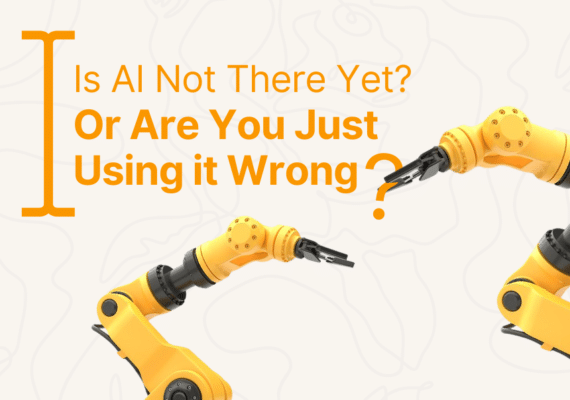One of the most interesting things about digital marketing (at least in my opinion) is how transferable the core skills are across different industries – SEO will always involve content creation and optimisation; CRO will always involve improving a website/app based on user feedback and usage. But where this gets interesting is how the details of these skills adapt – for example, content creation for a plumbing company will likely be very different to content creation for a care home, while many principles still stay the same (optimising titles & meta descriptions to increase click-through rates, etc).
Non-Government Organisations are no exception. As many are non-profit, this creates budget constraints and short staffing challenges to creating and implementing a comprehensive digital strategy. Many NGOs we’ve worked with in the past have expressed these challenges but show a desire for reaching and converting audiences online. With these challenges in mind, in this blog post, I aim to lay out a simple strategy to getting started with digital marketing for your NGO, ordered as stages in terms of priorities.
So, let’s get started:
Contents
Stage 0: Setting SMART Goals
Before you do anything online, SMART targets for your NGO are a MUST. If you already have these, feel free to skip this stage, if not, please read our blog post on setting goals for your digital marketing campaign. Without specific, measurable targets, there’s nothing to aim for and will most likely leave you unfocused and, ultimately, disappointed.
(You should approach this stage with the intent of creating a digital strategy. If this is too time-consuming, however, feel free to set your SMART targets and move on to stage 1.)
Stage 1: Website Audit
Before you can begin any digital marketing campaign; first, you need to have a fast, well-designed website that:
- Makes learning about your mission and purpose easy;
- Has clear next steps telling users what they should be doing next (a.k.a. ‘call-to-action’, an example of this would be a ‘Donate Now’ button).
These 2 factors are the bare essentials of any website, commercial or otherwise. If it’s not obvious what you do in the first few seconds of visiting your website, or if it’s unclear as to exactly what visitors should do on your website, then you will need to revise your content and change accordingly.
Some useful links:
- Test/improve website speed: Google Pagespeed Insights gives some fantastic advice. Simply copy/paste your website, download the resources and install them on your website.
- Test mobile-friendliness: Google Mobile-Friendly Test is also a fantastic insight tool that you can copy/paste your website into.
Stage 2: Start With Social
For NGOs, social media is an excellent tool. My advice is to start on 1 network, many organisations make the mistake of trying to manage several at once, don’t fall into this hole! Twitter is a great place to build a following. Using Twitter, you can start conversations with other like-minded groups, organisations, and influencers. If you provide value to these while staying true to your mission, you should start to gain followers that you can further interact with. Be sure to read our blog posts on using Twitter to attract followers and improve engagement and how to create a social media strategy.
Stage 3: Create Content
After you’ve gained some Twitter followers, now is the time to start delivering more value to them in the form of content. The best way to share your insights and knowledge is in the form of blog posts. Ideally, you’ll want blog posts hosted on your website (just like this blog post you’re reading now), then shared on your social channel(s), using relevant hashtags on Twitter and Instagram (don’t use hashtags on Facebook or LinkedIn!).
To get started, look at the blogs of other, similar NGOs and see what types of posts get the most interactions and look at how you can tell your version of this article, relating to your mission and target audience’s interests. An example would be this blog post – There are other blog posts explaining how NGOs can utilise digital marketing, but I didn’t find any that gave a step-by-step approach and lots of useful links. SocialB’s mission is to help businesses and organisations reach new audiences online and grow, so, by writing this article, I am helping NGOs grow online in a way that I would personally find useful if I worked for an NGO.
Stage 4: Expand Social
If you find that Twitter is working successfully and that you can spend a bit of time on other networks, then now is the time to expand. Which network you use depends on your organisation’s target audience (Facebook = B2C, Linkedin = B2B, etc). Each network comes with its own challenges and opportunities, so research into each is a must. A lot of the content you share on Twitter can be used on other networks, just make sure to optimise it for each (again, don’t use hashtags on Facebook or Linkedin!).
Stage 5: Start An Email Newsletter
If you find that visitors are interacting with the content you are creating/posting, now is the time to start collecting email addresses for a monthly newsletter. Add a box on your website that encourages visitors to sign-up for monthly insights into your organisation’s mission/goals and, ultimately, will provide them value. Once you have a couple dozen subscribers, use MailChimp (free to up to 2,000 subscribers) to create and send monthly newsletters, designed to keep subscribers up-to-date and encourage them to complete your key action (e.g. donation).
Create – Measure – Improve
Now you should be at the point where you are creating blog posts on a monthly/fortnightly/weekly/biweekly basis, sharing them on social media and in your monthly newsletter. The next, on-going step is to constantly analyse the performance of your website and social/email channels, and improve them accordingly. We have plenty of helpful blog posts on this topic and this should be carried out with the intention of providing more value to your website’s visitors and, ultimately, persuade them to complete a desired action (e.g. donate).
This strategy is how I would personally approach an NGO’s digital marketing, with further information it will most likely adapt to the organisation’s needs and goals. Please feel free to adjust this plan according to what does and doesn’t work for your NGO. For example, I left out paid advertising due to many NGOs being non-profit, but, if accounted for, paid advertising could be a potentially valuable channel.












